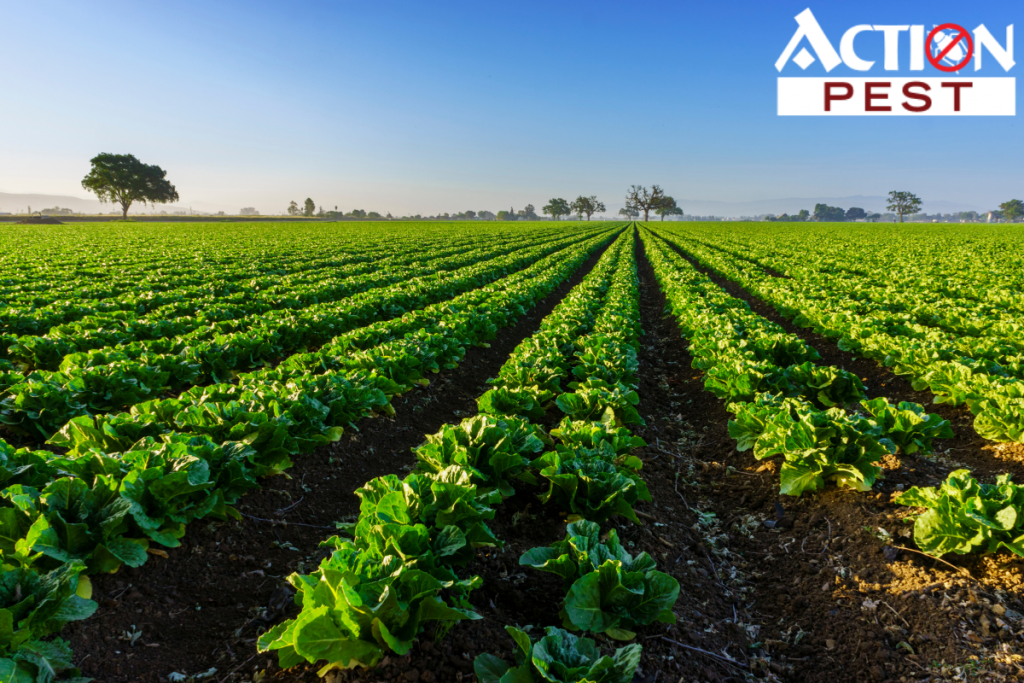
Whenever the word “pest” gets mentioned, what’s the first thing that comes to mind? If you automatically think of something that shouldn’t be where they are right now, you are partially correct. In the case of farm pests, these are creatures that nobody wants near their crops as they can do extensive damage. With the weather warming up and harvest time quickly approaching, pests destroying your crops is the last thing you want. But what are the kinds of pests that can be considered farm pests? How bad can they affect a farmer’s harvest? Let’s find out.
Major Farm Pests that Affect Crops in Canada
If you want to start a discussion on the most significant pests in Canadian farming, then you’ll be faced with a Herculean task. That is why we will only be focusing on four of the major farm pests. These annoying pests can be found on farmland and even in your own personal garden. We’re going to provide you with more information about them, such as reasons why they are considered farm pests, and some solutions you can employ if you see them on your crops. Let’s get started.
Aphids
Aphids are one of the most common pests found worldwide but they’re a group that a lot of us are not visually familiar with – mainly because they are tiny. They are minute insects that sport a soft body and a piercing-sucking mouthpart. This mouthpart is what they use to ingest the sap of plants. Aphids prefer easy and safe access as they are immobile during feeding times. For this reason, they’re usually found in colonies beneath new leaves. If an infestation occurs, the leaves turn yellow or wilt because the sap has been drained by Aphids. While this may seem like bad news, most aphid attacks rarely affect healthy, established plants. However, some plant species (and crops) are sensitive to aphid attacks. Leaves may get distorted due to the saliva injected by the insects. Some aphids attack flower buds and fruits, causing abnormal growth, and this makes them farm pests.
The best way to control an aphid attack is to detect them early. Checking young leaves or buds at least twice a week for any signs of aphids is a way for you to identify those forming clusters. As soon as you see a small colony, expect their numbers to grow in only a matter of days. Most solutions for aphids are considered “contact insecticides,” which means they need to target the aphids directly in order for the solution to work. This can prove to be a challenge because as we’ve mentioned prior, aphids reside under leaves that provide them with minimal protection.
Leafhoppers
The term leafhopper refers to any insect within the Cicadellidae family, which are colloquially known as hoppers. These insects also suck sap from different forms of plant life. They are called hoppers thanks to their strong hind legs, which are modified for jumping. Similar to aphids, Leafhoppers also have a piercing-sucking mouthpart. Leafhoppers are considered farm pests not only because they suck sap but also because they can transmit plant pathogens. Think of them as mosquitoes for plants.
As soon as nymphs or eggs of leafhopper are sighted within the vicinity of your crops, one should employ control measures as soon as possible. Using row covers and shade cloth can act as a physical barrier to prevent the hoppers from reaching the plants. Introducing general predators can also be a solution in controlling leafhopper nymphs and eggs, but not so much for adults. Lastly, insecticides can be used if there is a need for immediate pest control. Note that you will need the help of an expert for said application to limit the damage that can occur to the surrounding areas.
Worms
We’re not talking about regular earthworms that are beneficial for oxygenating soil. Worms can be a catch-all term for the larvae of various insects, from moths to beetles. Some of the more popular worms that are considered pests to crops include cutworms, wireworms, rootworms, and cabbage worms. While each worm can affect a plant differently, their particular impact is quite similar. Because they are in the larval stage, all they do is eat. If your crop or garden does have a worm infestation, you will notice that leaves and stems have been eaten away.
If you do notice a couple of worms in your garden, then the best way to control them is to just simply relocate them. These farm pests are not that hard to spot, and you can quickly identify their handiwork. Inviting wildlife like birds into your garden can also help in controlling worms. However, for large farms with severe infestations, you might need to use pesticides to cover large swathes of land in one go.
Slugs and Snails
Unlike the other three creatures mentioned above, the last ones aren’t insects. Slugs and snails come from the same phylum of Mollusca but have a huge difference. Snails have external spiral shells while slugs are naked. Both use their “foot” that secretes mucus to allow them to move around. Snails and slugs feed on both living and decaying plant life. They prefer flowers and succulent foliage, so they can be problematic for seedlings and some herbaceous plants.
Controlling these mollusks can be pretty straightforward. First, you need to make sure you eliminate all their possible hiding places. Anything that can protect them from direct sunlight can be used as shelter. This includes under leaves, trees and bushes. Next, regular trapping and removal will be needed to control their population.
Contact Action Pest for Farm Pests Today
If you see any of these pests in your garden or on your farm, just follow our recommendations above. However, if you feel like it’s already out of control, then you better let the experts handle it for you. Action Pest is a leading name in pest control and management in Ontario, Canada. With over 40 years of experience in handling pests of all shapes and sizes, you can rest assured Action Pest will have the solution for your pest problem. They will determine the best strategies with the best outcomes to ensure the utmost satisfaction when it comes to your pest control needs. Contact Action Pest today for a free consultation.







